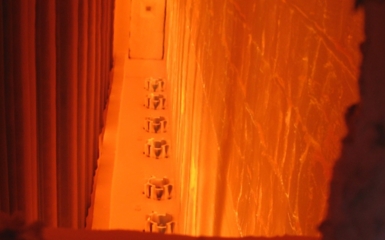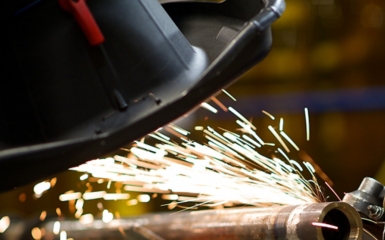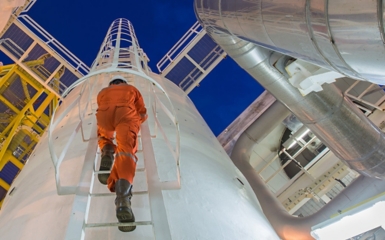Ethylene oxide (EO) is an important chemical with a variety of uses as a chemical intermediate and as a sterilant. Derivatives of ethylene oxide include ethylene glycol, amines, solvents, and surfactants. As a sterilant, it is used to sterilize medical devices, spices, and other food products. While its properties make it indispensable, they also demand stringent safety measures. We leverage our deep expertise in combustion and emission control to ensure EO flaring is both effective and safe.
Safety Concerns
Ethylene oxide presents unique combustion challenges due to its broad flammability range, toxicity, and rapid temperature decomposition potential – even in the absence of oxygen. The American Chemistry Council’s guidance highlights EO’s flammability risks, with a UEL ranging from 3%-100%.
The Chemical Safety Board investigated an incident at a sterilization facility in 2006 where a low-velocity, EO-rich stream came in contact with a lit burner, flashed back through the ductwork, and caused an explosion in the sterilization chamber. This incident highlights the importance of maintaining adequate gas velocities and isolating ethylene oxide from air sources.
Design Solutions
At John Zink, we design EO flares with multiple layers of proven safety measures. Our proprietary velocity seal and liquid seal technology provide critical safeguards against flashback risks. By engineering solutions that align with industry best practices, we deliver the reliability and performance customers depend on. In addition to our standard solutions, other options for protection include dilution of the flare gas and installation of a flame arrestor. Each protection method has its advantages which are briefly described below.
Velocity Seal
The purpose of any velocity seal is to increase the velocity by reducing the flow area in a section of the flare tip which prevents air from backflowing beyond that point. A traditional velocity seal is essentially a cone that reduces the tip diameter over a short distance, but a John Zink EO-rated seal design is proprietary design that reduces the probability of EO flashback with reduced purge. The minimum velocity maintained through the EO seal is not only high enough to prevent air backflow but also to protect against EO’s high flame velocity and prevent a flashback from propagating. The purge rate specified for an EO flare maintains this minimum velocity and is much higher than a recommended Husa flare purge rate which is widely used across many industries. This rate is the minimum rate to limit the oxygen concentration in the stack to a safe level – 6% at 25 feet from the tip exit. When using a velocity seal, installation of a backup purge source is necessary.
Liquid Seal
A liquid seal can act as a flame arrestor and is typically used as a backup to the velocity seal. Inside the liquid seal, the gas is bubbled through a submerged perforated plate eliminating any continuous flow channels through the liquid. Without a continuous flow path of gas, the flame front cannot continue to propagate. The liquid seal must be well maintained to be effective and because of this the American Chemistry Council recommends two liquid seals or a liquid seal and another protection method in series for safe EO flaring.
Dilution
The EO stream can be diluted with an inert or methane until the concentration is low enough to not be a flashback concern. Using methane ensures that the heating value is maintained and requires less volume percent to be added than nitrogen. This type of system requires a way to detect when an EO flaring event is occurring before the gas gets to the flare. Additionally, the dilution system must be reliable and fast responding.
Flame Arrestor
Flame arrestors can be installed in the flare line to prevent the propagation of the flame into the line. The flame arrestor only works for a limited period of time before it loses its effectiveness and an inert gas would need to be injected into the flare header. Flame arrestors are typically high-pressure drop devices and therefore may not be feasible for all applications.
System Design Considerations
Safe EO system design begins well before the flare and several items should be considered. First, oxygen-containing streams should be isolated from high-concentration, EO-containing streams. This will likely require two flare headers and tips for the different streams. Second, due to the safeguards required, the hydraulic capacity of an EO flare is limited. Large relief cases may not fit in an EO flare and even if they do the flare will be inefficient. By directing high EO cases to a dedicated flare, customers optimize performance of the system and extend the flare lifespan, reducing long-term maintenance costs and improving overall system efficiency. Lastly, site utility capacity should be evaluated early on as increased purge rates and/or dilution strategies may result in much higher utility consumption than with a typical flare.
Partner with the Industry Leader in Safe EO Flaring
We don’t just design solutions – we engineer confidence. Our proven EO flaring technologies and industry expertise ensure maximum safety, efficiency, and compliance for your operations. Contact us today to learn how we can help optimize your system and enhance safety.



